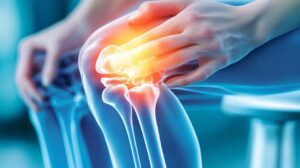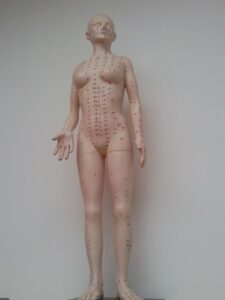
This post is about Chiropractor West Palm Beach: Acupuncture For Frozen Shoulder. Did you know acupuncture can be a helpful complementary treatment for a frozen shoulder?
Studies found that acupuncture is safe and effective for pain reduction, restoring shoulder function, and range of motion for Frozen shoulder. Furthermore, acupuncture was beneficial for patients in the acute or chronic condition. In addition, studies found that physical medicine such as chiropractic in conjunction with acupuncture is extremely effective for frozen shoulder.
What is a Frozen Shoulder (Adhesive Capsulitis)?
The cause of frozen shoulder/adhesive capsulitis is unknown. It has been associated with diabetes, thyroid disorders, lung disease, trauma, immobilization, and cervical (neck) disk disease. Primarily, thickened shoulder capsular contractures is how it occurs. This capsule is a fibrous sheath (tissue composed of bundles of collagenous white fibers and between are rows of connective tissue cells) which encloses the structures of the joint. Secondary contractures of other areas of the shoulder occur in the following: shoulder ligaments, bursa (sac of fluid that reduces friction between the surfaces of a bone and soft tissue), tendons. Adhesive Capsulitis is more common in 40-65 year olds and is prevalent in sedentary individuals.
The process of developing a frozen shoulder begins as an inflammatory stage/ phase lasting from 2 to 9 months (i.e. similar to acute tendonitis). Next, a stiffening stage lasting 4 to 12 months, where there is a loss of range of motion. Finally, in the thawing stage lasting 6 to 9 months, range of motion is increasing and pain is decreasing.
Frozen shoulder can be formally classified as: (1) primary frozen shoulder due to adhesive pericapsulitis/adhesive capsulitis as mentioned above. Additionally, it can be a secondary frozen shoulder resulting from a sprain, strain, tendinopathy, tendon tear, or bursitis.

Acupuncture Treatment for Frozen Shoulder- Research and treatment
Firstly, Acupuncture improves blood flow and soothes the nervous system. Researchers believe acupuncture stimulates the nerves. And this can dramatically relieve pain. Additionally, once these neurotransmitters are moving about, our blood vessels vasodialates. And this gets blood into the affected areas, initiating healing. This triggers nerve signaling that affects the function of other parts of the body, including organs.
Secondly, for conventional treatment with drugs, many outcomes are not a full resolution. So, acupuncture may be the final option for full resolution. Acupuncture is natural and has fewer adverse side effects than drugs.
Thirdly, perhaps acupuncture has its effects by releasing natural opioids in the body that relieve pain. Scientists believe that acupuncture overrides pain signals in the nerves. In Traditional Chinese medicine, it is said acupuncture allows energy (qi) or blood to flow freely. This thereby heals a frozen shoulder.
Fourthly, electroacupuncture is a method of delivery of a pulsed electric current to the acupoints. Moreover, researchers investigated the effects of electroacupuncture. The results point out that electroacupuncture plus rehabilitation such as chiropractic may provide earlier pain relief. Electroacupuncture may positively influence the metabolism during treatment. Thereby promoting blood circulation, improving tissue nutrition, and eliminating inflammation and edema. Studies have shown electroacupuncture relieves frozen shoulder pain and helps restore range of motion.

Chiropractor West Palm Beach: Acupuncture for Frozen Shoulder
The acupuncture treatment stimulates the imbalanced meridian pathways to bring balance back. This activates the body’s natural healing abilities. Indeed, Acupuncture has a beneficial effect when treating many diseases and painful conditions for over 4000 years.
Meiri Chiropractic offers acupuncture for frozen shoulder and many other ailments. Dr. Natalie Meiri is a chiropractic physician, board certified in acupuncture with over 20 years of experience. Call today for your acupuncture treatment for frozen shoulder at 561-253-8984.
References:
https://pmc.ncbi.nlm.nih.gov/articles/PMC7606388/
https://www.sciencedirect.com/science/article/pii/S0929664618309239


















